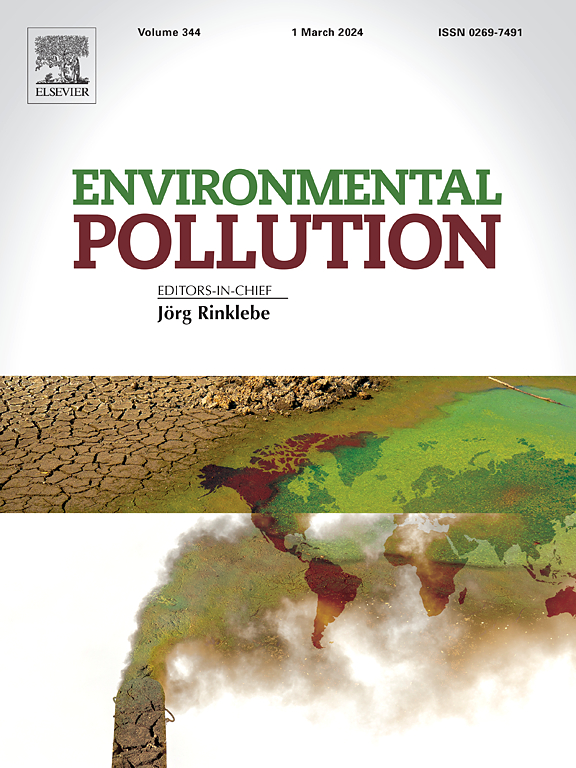Exposure to polyoxyethylene tallow amines (POEAs), glyphosate co-formulation surfactants, in a US pregnant population and their potential endocrine disrupting effects
IF 7.6
2区 环境科学与生态学
Q1 ENVIRONMENTAL SCIENCES
引用次数: 0
Abstract
Emerging but inconsistent evidence suggests that glyphosate (GLY)-based herbicides (GBHs) are more toxic than the active ingredient, GLY alone. Polyoxyethylene tallow amines (POEAs) are surfactants most widely used in GBH formulations, making up to 5–15 % by weight. However, neither POEA exposure nor their toxicity has been well studied in the general population. This study leverages second trimester urine samples collected from 86 pregnant participants of a multi-center, US-based pregnancy cohort. We measured three POEA homologs, i.e., C16s(EO)2, C18u(EO)2, and C18s(EO)2, using an ultrahigh performance liquid chromatography-tandem with mass spectrometry. These homologs were detected in 79 %, 97 %, and 59 % of the samples (LOD: 0.1 ng/mL) at a mean concentration of 1.87, 1.88, and 1.65 ng/mL, respectively. While these homologs were highly correlated with each other (rho >0.7), their correlations with GLY and its breakdown product, aminomethylphosphonic acid (AMPA), were moderate (rho <0.4). Compared to other races, the POEA level in urine was the lowest in White participants (p = 0.047). We observed an indication that a higher POEA level was associated with increased ano-genital distance (AGD), a marker of gestational androgen milieu, in male infants only (β = 2.46, p = 0.057); such relationship remained unchanged after adjusting for GLY (β = 2.45, p = 0.055) or AMPA (β = 2.46, p = 0.058). Despite the small sample size, our study provides the first population data on POEA exposure which demonstrates widespread exposure in the general population. Suggestive associations between urinary POEA and AGD in male newborns implicate potential endocrine disrupting property of POEA, which warrant further investigation in larger studies.


求助全文
约1分钟内获得全文
求助全文
来源期刊

Environmental Pollution
环境科学-环境科学
CiteScore
16.00
自引率
6.70%
发文量
2082
审稿时长
2.9 months
期刊介绍:
Environmental Pollution is an international peer-reviewed journal that publishes high-quality research papers and review articles covering all aspects of environmental pollution and its impacts on ecosystems and human health.
Subject areas include, but are not limited to:
• Sources and occurrences of pollutants that are clearly defined and measured in environmental compartments, food and food-related items, and human bodies;
• Interlinks between contaminant exposure and biological, ecological, and human health effects, including those of climate change;
• Contaminants of emerging concerns (including but not limited to antibiotic resistant microorganisms or genes, microplastics/nanoplastics, electronic wastes, light, and noise) and/or their biological, ecological, or human health effects;
• Laboratory and field studies on the remediation/mitigation of environmental pollution via new techniques and with clear links to biological, ecological, or human health effects;
• Modeling of pollution processes, patterns, or trends that is of clear environmental and/or human health interest;
• New techniques that measure and examine environmental occurrences, transport, behavior, and effects of pollutants within the environment or the laboratory, provided that they can be clearly used to address problems within regional or global environmental compartments.
 求助内容:
求助内容: 应助结果提醒方式:
应助结果提醒方式:


